by Wikipedia
Accessed: 4/14/20

Political concepts: Anti-racism Christian anarchism Christian communism Liberation theology Popular front Postcolonial theology Separation of church and state Social Christianity Tolstoyan movement Two kingdoms doctrine
People: Hugo Chávez James H. Cone Dorothy Day Tommy Douglas Terry Eagleton Paulo Freire Martin Luther King Jr. Jesse Jackson Gustavo Gutierrez F. D. Maurice Henri Saint-Simon Sophie Scholl Dorothee Sölle William Temple Leo Tolstoy Cornel West
Major writings: The Kingdom of God Is Within You Pedagogy of the Oppressed Sermon on the Mount A Theology of Liberation
Organizations: Catholic WorkerFSLN
Christian socialism is a religious and political philosophy that blends Christianity and socialism, endorsing left-wing economics on the basis of the Holy Bible and the teachings of Jesus of Nazareth.
Many Christian socialists believe capitalism to be idolatrous and rooted in the sin of greed.[1] Christian socialists identify the cause of inequality to be the greed that they associate with capitalism.[1]
Christian socialism became a major movement in the United Kingdom beginning in the 19th century. The Christian Socialist Movement, since 2013 known as Christians on the Left, is one formal group.[1]
Other earlier figures are also viewed as Christian socialists, such as the nineteenth century writers Frederick Denison Maurice (The Kingdom of Christ, 1838), John Ruskin (Unto This Last, 1862), Charles Kingsley (The Water-Babies, 1863), Thomas Hughes (Tom Brown's Schooldays, 1857), Frederick James Furnivall (co-creator of the Oxford English Dictionary), Adin Ballou (Practical Christian Socialism, 1854), and Francis Bellamy (a Baptist minister and the author of the United States' Pledge of Allegiance).
History
Biblical age
Elements that would form the basis of Christian socialism are found in the Old and New Testaments.[2]
Old Testament
The Old Testament had divided perspectives on the issue of poverty. One part of the Jewish tradition held that poverty was judgment of God upon the wicked while viewing prosperity as a reward for the good, stating that "The righteous has enough to satisfy his appetite, but the belly of the wicked suffers want" (Prov. 13:25).[3]
However, there are other sections that instruct generosity to the "have nots" of society. The Torah instructs followers to treat neighbours equally and to be generous to have nots, such as stating:
You shall not oppress your neighbour...but you shall love your neighbour as yourself: I am the Lord
— (Lev 19:13, 18).[4]
He [the Lord your God] executes justice for the fatherless and the widow, and loves the sojourner, giving him food and clothing. Love the sojourner therefore; for you were sojourners in the land of Egypt
— (Deut. 10:18–19).[5]
When you reap in your harvest in the field, and have forgotten a sheaf in the field, you shall not go back to get it...When you beat your olive trees, you shall not go over the boughs again...When you gather the grapes of your vineyard, you shall not glean it afterward; it shall be for the sojourner, the fatherless and the widow. You shall remember that you were a slave in the land of Egypt; therefore I command you to do this
— (Deut. 24:19–22).[2]
Some of the Psalms include many references to social justice for the poor:
Give justice to the weak and the fatherless; maintain the right of the afflicted and the destitute. Rescue the weak and the needy; deliver them from the hand of the wicked
— (Ps. 82 (81): 3, 4).[6]
Blessed is the man who fears the Lord, who greatly delights in his commandments!...He has distributed freely, he has given to the poor; his righteousness endures forever; his horn is exalted in honour
— (Ps. 112 (111): 1, 9).[6]
Amos emphasizes the need for "justice" and "righteousness" that is described as conduct that emphasizes love for those who are poor and to oppose oppression and injustice towards the poor.[7] The prophet Isaiah (759–694 B.C.) to whom is attributed the first thirty-nine chapters of the Book of Isaiah ("Proto-Isaiah"), followed upon Amos' themes of justice and righteousness involving the poor as necessary for followers of God, denouncing those who do not do these things, stating:
Even though you make many prayers, I will not listen; your hands are full of blood...cease to do evil, learn to do good; seek justice, correct oppression; defend the fatherless, plead for the widow
— (Isa. 1:15–17).[7]
The Book of Sirach, one of the Deuterocanonical or Apocryphal books of the Old Testament, denounces the pursuit of wealth, stating:
He who loves gold will not be justified, and he who pursues money will be led astray by it. Many have come to ruin because of gold, and their destruction has met them face to face. It is a stumbling block to those who are devoted to it, and every fool will be taken captive by it
— (Sir. 31: 5–7).[8]
New Testament
In the New Testament, Jesus in Matthew 25:31–46 identifies himself with the hungry, the poor, the sick, and the prisoners.[9] Matthew 25:31–46 is a major component of Christianity and is considered the cornerstone of Christian socialism.[9]
Matthew 25:31-46 New International Version (NIV)
The Sheep and the Goats
31 “When the Son of Man comes in his glory, and all the angels with him, he will sit on his glorious throne. 32 All the nations will be gathered before him, and he will separate the people one from another as a shepherd separates the sheep from the goats. 33 He will put the sheep on his right and the goats on his left.
34 “Then the King will say to those on his right, ‘Come, you who are blessed by my Father; take your inheritance, the kingdom prepared for you since the creation of the world. 35 For I was hungry and you gave me something to eat, I was thirsty and you gave me something to drink, I was a stranger and you invited me in, 36 I needed clothes and you clothed me, I was sick and you looked after me, I was in prison and you came to visit me.’
37 “Then the righteous will answer him, ‘Lord, when did we see you hungry and feed you, or thirsty and give you something to drink? 38 When did we see you a stranger and invite you in, or needing clothes and clothe you? 39 When did we see you sick or in prison and go to visit you?’
40 “The King will reply, ‘Truly I tell you, whatever you did for one of the least of these brothers and sisters of mine, you did for me.’
41 “Then he will say to those on his left, ‘Depart from me, you who are cursed, into the eternal fire prepared for the devil and his angels. 42 For I was hungry and you gave me nothing to eat, I was thirsty and you gave me nothing to drink, 43 I was a stranger and you did not invite me in, I needed clothes and you did not clothe me, I was sick and in prison and you did not look after me.’
44 “They also will answer, ‘Lord, when did we see you hungry or thirsty or a stranger or needing clothes or sick or in prison, and did not help you?’
45 “He will reply, ‘Truly I tell you, whatever you did not do for one of the least of these, you did not do for me.’
46 “Then they will go away to eternal punishment, but the righteous to eternal life.”
Another key statement in the New Testament that is an important component of Christian socialism is Luke 10:25–37 that follows the statement "You shall love your neighbour as yourself" with the question "And who is my neighbour?", and in the Parable of the Good Samaritan Jesus gives the revolutionary response that the neighbour includes anyone in need, even people we might be expected to shun.[10] (The Samaritans were considered a heretical sect by Jews and neither would usually deal with the other.)[10]
Luke 10:25-37 New International Version (NIV)
The Parable of the Good Samaritan
25 On one occasion an expert in the law stood up to test Jesus. “Teacher,” he asked, “what must I do to inherit eternal life?”
26 “What is written in the Law?” he replied. “How do you read it?”
27 He answered, “‘Love the Lord your God with all your heart and with all your soul and with all your strength and with all your mind’[a]; and, ‘Love your neighbor as yourself.’[ b]”
28 “You have answered correctly,” Jesus replied. “Do this and you will live.”
29 But he wanted to justify himself, so he asked Jesus, “And who is my neighbor?”
30 In reply Jesus said: “A man was going down from Jerusalem to Jericho, when he was attacked by robbers. They stripped him of his clothes, beat him and went away, leaving him half dead. 31 A priest happened to be going down the same road, and when he saw the man, he passed by on the other side. 32 So too, a Levite, when he came to the place and saw him, passed by on the other side. 33 But a Samaritan, as he traveled, came where the man was; and when he saw him, he took pity on him. 34 He went to him and bandaged his wounds, pouring on oil and wine. Then he put the man on his own donkey, brought him to an inn and took care of him. 35 The next day he took out two denarii[c] and gave them to the innkeeper. ‘Look after him,’ he said, ‘and when I return, I will reimburse you for any extra expense you may have.’
36 “Which of these three do you think was a neighbor to the man who fell into the hands of robbers?”
37 The expert in the law replied, “The one who had mercy on him.”
Jesus told him, “Go and do likewise.”
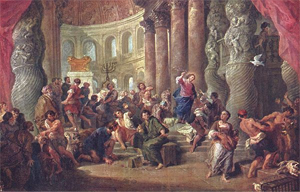
"Jesus Expels the Moneylenders from the Temple" by Giovanni Paolo Pannini
In the Sermon on the Plain, Jesus says, "Blessed are you poor, for yours is the kingdom of God. Blessed are you that hunger now, for you shall be satisfied" (Luke 6:20, 21).[11]
Christian socialists note that James the Just, the brother of Jesus of Nazareth, in the Epistle of James criticizes the rich intensely and in strong language:
Come now, you rich, weep and howl for the miseries that are coming upon you. Your riches have rotted and your garments are moth-eaten. Your gold and silver have rusted, and their rust will be evidence against you and will eat your flesh like fire. You have laid up for treasure for the last days. Behold, the wages of the labourers who mowed your fields, which you have kept back by fraud, cry out; and the cries of the harvesters have reached the ears of the Lord of hosts. You have lived on the earth in luxury and in pleasure; you have fattened your hearts in a day of slaughter.
— (Jam. 5:1–6).[12]
During the New Testament period and beyond, there is evidence that many Christian communities practiced forms of sharing, redistribution and communism.[13]
Church Fathers age
Basil of Caesarea (c. 330–379), the Father of the Eastern monks who became Bishop of Caesarea, established a complex around the church and monastery that included hostels, almshouses, and hospitals for infectious diseases.[14] During the great famine of 368, Basil denounced against profiteers and the indifferent rich.[14] Basil wrote the sermon on The Rich Fool in which he states:
Who is the covetous man? One for whom plenty is not enough. Who is the defrauder? One who takes away what belongs to everyone. And are not you covetous, are you not a defrauder, when you keep for private use what you were given for distribution? When some one strips a man of his clothes we call him a thief. And one who might clothe the naked and does not—should not he be given the same name? The bread in your hoard belongs to the hungry; the cloak in your wardrobe belongs to the naked; the shoes you let rot belong to the barefoot; the money in your vaults belongs to the destitute. All you might help and do not—to all these you are doing wrong[15]
John Chrysostom declared his reasons for his attitude towards the rich and position of attitude towards wealth by saying:
I am often reproached for continually attacking the rich. Yes, because the rich are continually attacking the poor. But those I attack are not the rich as such, only those who misuse their wealth. I point out constantly that those I accuse are not the rich, but the rapacious; wealth is one thing, covetousness another. Learn to distinguish.[16]
19th century to present
A variety of socialist perspectives emerged in 19th century Britain, beginning with John Ruskin.
John Ruskin
The influential Victorian art critic John Ruskin expounded theories about social justice in Unto This Last (1860). In it, he stated four goals that might be called "socialist" although Ruskin did not use the term.[17]
1. "training schools for youth, established at government cost";
2. in connection with these schools, the government should establish "manufactories and workshops, for the production and sale of every necessary of life";
3. all unemployed people should be "set to work" or trained for work if needed or forced to work if necessary;
4. "for the old and destitute, comfort and home should be provided".
Ruskin was not "an authentic Socialist in any of its various nineteenth-century meanings." His only real contact with the Christian Socialists came through the Working Men's College. However, he influenced later socialist thinking, especially William Morris.[18]
Artists
The painters of the Pre-Raphaelite Brotherhood were influenced and sponsored by Ruskin.[19] The artist William Morris was a leader of the Socialist League founded in December 1884.[20]
Fabian Society
The Fabian Society was founded in the same year; Sidney and Beatrice Webb were among its leading members. The Fabians influenced members of the Bloomsbury Group and were important in the early history of the British Labour Party.[21]
Episcopal Church Socialist League and the Church League for Industrial Democracy
Founded in 1911[22] by Vida Dutton Scudder, herself influenced by the Fabian Society, the Episcopal Church Socialist League and its successor the Church League for Industrial Democracy sought to ally Christian doctrine with the plight of the working class[23] as a part of the larger social gospel movement that was taking hold of many urban churches across the United States in the early 20th century.
Bishop Spalding
In the November 1914 issue of The Christian Socialist, Episcopal bishop Franklin Spencer Spalding of Utah stated:
The Christian Church exists for the sole purpose of saving the human race. So far she has failed, but I think that Socialism shows her how she may succeed.
It insists that men cannot be made right until the material conditions be made right. Although man cannot live by bread alone, he must have bread. Therefore,
the Church must destroy a system of society which inevitably creates and perpetuates unequal and unfair conditions of life. These unequal and unfair conditions
have been created by competition. Therefore competition must cease and cooperation take its place.[24]
Christian democracy
The political movement of Christian democracy espouses some values of Christian socialism, for example "economic justice" and "social welfare." It opposes an "individualist worldview" and it approves state intervention in the economy in defence of "human dignity." On the other hand, because of its "close association with Roman Catholicism", Christian democracy differs from Christian socialism by its emphasis on "traditional church and family values," by its defence of "private property," and by its opposition to "excessive intervention of the state."[25]
Christian democratic parties (under various names) were formed in Europe and Latin America after World War II. Some became "a major political force."[25]
Communists
Main article: Christian communism
Christian communism is a form of religious communism based on Christianity. It is a view that the teachings of Jesus Christ compel Christians to support communism as the ideal social system. Although there is no universal agreement on the exact date when Christian communism was founded, many Christian communists assert that evidence from the Bible (in the Acts of the Apostles)[26] suggests that the first Christians, including the apostles, established their own small communist society in the years following Jesus' death and resurrection.[26] As such, many advocates of Christian communism argue that it was taught by Jesus and practiced by the apostles themselves.[27] Some independent historians confirm it.[28][29][30][31][32][33][34][35][36][37][38][39]
Spiritualism and Occultism
Utopian socialist ideas continued, after 1848, in new religious movements such as Spiritualism or Occultism.[40] They were often marked by a heterodox Christian identity and a decidedly anti-materialist attitude.
In Catholicism
In Catholicism, communism was strongly criticized in the 1878 papal encyclical Quod Apostolici Muneris by Pope Leo XIII, as he believed that it led to state domination over the freedom of the individual and quelled proper religious worship, inherently turning the top hierarchical power over to the state instead of God. This opinion was moderated in an encyclical issued by Pope Pius XI on 15 May 1931 Quadragesimo anno, wherein Pius describes the major dangers for human freedom and dignity arising from unrestrained capitalism and totalitarian communism. Pius XI called upon true socialism to distance itself from totalitarian communism as a matter of clarity and also as a matter of principle. Communists were accused of attempting to overthrow all existing civil society, and Christian socialism, if allied to communism, was deemed to be an oxymoron because of this.[citation needed] Pius XI famously wrote at the time that "no one can be at the same time a good Catholic and a true socialist",[41] yet had clarified that a Catholic was free to vote for the British Labour Party, the UK affiliate of the Socialist International. Nonetheless, prominent Catholic Socialists did exist during Pope Pius XI's era, such as Dorothy Day of the United States of America, and Father Michael O'Flanagan of Ireland.
Pope Benedict XVI addressed the Italian Senate, declaring, “In many respects democratic socialism was and is close to Catholic social doctrine; in any case, it contributed toward the formation of a social consciousness.” [42]
Pope Francis has shown sympathy to socialist causes with claims such as that capitalism is "Terrorism against all of Humanity"[43] and that "it is the communists who think like Christians. Christ spoke of a society where the poor, the weak and the marginalized have the right to decide."[44]
More recently movements such as liberation theology, and Tradinista! have argued for the compatibility of socialism and Catholicism. António Guterres, a practicing Catholic and current Secretary-General of the United Nations is the immediate past President of the Socialist International.
In Calvinism
In France, the birthplace of Calvinism, the Christianisme Social (Social Christianity) movement emerged from the preaching of Tommy Fallot[45] in the 1870s. Early on, the movement focused on such issues as illiteracy and alcoholism amongst the poor.[46] After the First World War, Social Christianity moved in two directions: towards pacifism and towards ecumenism.
Hence within the movement emerged conscientious objectors such as Jacques Martin, Philo Vernier and Henri Roser, economists pursuing policies that reflected cooperation and solidarity (such as Bernard Lavergne and Georges Lasserre), and theologians such as Paul Ricoeur. One of the pastors in the movement, Jacques Kaltenbach, was also to have a formative influence on André Trocmé.[47]
Under the Vichy regime, which had seen the emergence of other forms of witness (particularly the support of internees in the camps, and aiding Jews to escape), the movement was reborn to tackle the problems of a changing world. It expressed a Christian socialism, more or less in line with the beginning of a new political left. Political activism was very broad and included the denunciation of torture, East–West debate on European integration and taking a stance on the process of decolonization. It facilitated meetings between employers, managers and trade unionists to discern a new economic order.[citation needed]
After the events of May 1968, Calvinism in France became much more left-wing in its orientation.[48] One doctrinal text produced in this period, Church and Authorities, was described as Marxist in its orientation.[48] Churches now seized for themselves the political and social issues to tackle, such as nuclear power and justice for the Third World.
In the early 2000s, the Social Christianity movement temporarily discontinued and its journal, Other Times, ceased to be published.[46] However, the movement was relaunched on 10 June 2010 with a petition signed by over 240 people[46] and now maintains an active presence with its own website.[49]
Economically, Calvinists have supported capitalism and have been in the vanguard of promoting market capitalism[50] and have produced many of France's leading entrepreneurs.[50] With regard to politics and social issues however, they are very much socialists.[48] Three of France's post-war prime ministers have been Calvinists, despite Protestants only making up two percent of the population. Two of these prime ministers have been socialists.[50]
In Australia, the academic Roland Boer has attempted to synthesize Calvinism and Marxism.[51] He has stated that "it became clear to me that within Christianity there is a strong tradition of political and theological radicalism, which I continued to explore personally. Reformed or Calvinist theology did not seem to sit easily with that interest, so I spent many a long year rejecting that tradition, only to realise later that Calvin himself was torn between the radical potential of elements in the Bible and his own conservative preferences".[52]
In Wales, Calvinistic Methodism is the largest non-conformist religion. Its beginnings may be traced to Griffith Jones (1684–1761), of Llanddowror, Carmarthenshire, whose sympathy for the poor led him to set on foot a system of circulating charity schools for the education of children.[citation needed] However, until the nineteenth century, the prevailing thought amongst Welsh non-conformists was that "it would be wiser if the churches limited their activities to those of the altar and not to meddle at all with the state and social questions". This stemmed partly from the traditional nonconformist belief in the separation of church and state.[53]
In his influential sermon, Y Ddwy Alwedigaeth (The Two Vocations), Emrys ap Iwan challenged this passive pietism: "We must not think, like the old Methodists, Puritans and some Catholics, that we can only seek Godliness outside our earthly vocation." He condemned those Christians who limited godliness to directly religious matters such as Sabbath observance and personal devotion. He declared that all earthly things, including language and culture, have some kind of divine origin.[54]
Many of the founders of the Welsh nationalist social-democratic party, Plaid Cymru were also devout Calvinists,[citation needed] including John Edward Daniel. Daniel was the theologian credited for bringing neo-orthodoxy to Wales. Daniel argued that God did not create man as an isolated individual but as a social being.[54]
The second generation of Plaid Cymru leaders included R. Tudur Jones. His political stance, combined with Calvinist doctrine, created an integrated vision that was significant to the religious life of Christian Wales in the later half of the 20th century.[55] Jones argued that the "state should be a servant, to preserve order and to allow men to live the good life".[56]
Today, many Calvinist socialists in Wales support same-sex marriage on the grounds that it delivers marriage equality in the eyes of the state while still allowing churches to follow their own conscience, thus upholding the traditional Protestant belief in separation of church and state.[57]
The Calvinist tradition in Plaid Cymru has also influenced its non-violent approach.[citation needed] "The ideal is no fist violence, no verbal violence, and no heart violence.... Christians... point to the New Testament example of Jesus Christ clearing the temple. Here there is no suggestion of violence against people; rather the tables are turned as a symbolic act. The life and teaching of Jesus Christ were seen as the foundations of nonviolent direct action [for Plaid Cymru members]... loving their enemies on the one hand, but not compromising on what they saw as an issue of moral rightness."[58] Plaid Cymru continues to see itself as very much part of the Christian pacifist tradition.[57]
Criticism
Lawrence Reed, in Rendering Unto Caesar, writes that Jesus was not a socialist in that he promoted voluntary giving and charity rather than the mandatory taking by government (taxes).[59][dubious – discuss] Johnnie Moore (Professor of Religion at Liberty University) writing on the homepage of Fox News Radio's Todd Starnes, says Jesus was a capitalist.[60][dubious – discuss] Bryan Fischer, of the American Family Association, says Jesus was a capitalist who advocated "voluntary redistribution of wealth".[61][dubious – discuss]
Charles Haddon Spurgeon was critical of socialist doctrines, and warned that those who seek socialism "may soon have too much of it." Specifically, he regarded collectivist Christianity as inferior to faith on an individual level. He said "I would not have you exchange the gold of individual Christianity for the base metal of Christian Socialism."[62]
Christian socialist parties
• Agricultural People's Front of Peru (Peru)
• Christian Democracy (Greece)
• Christian Left Party (Chile)
• Christian Social Party (Netherlands)
• Christian Social Party (Switzerland)
• Christians on the Left, formerly the Christian Socialist Movement (United Kingdom; a Socialist Society affiliated with the Labour Party)
• Democratic Revival (Greece)
• League of Christian Socialists (the Netherlands)
• Le Sillon (France)
• Self-Defense of the Republic of Poland (Poland)
• Social Christians (Italy)
• Ligue de la jeune République (France)
Notable Christian socialists
Main category: Christian socialists
The following list includes notable followers of Christian socialism:
• John Archer, former Mayor of Christchurch and President of the New Zealand Labour Party[63]
• Francis Bellamy, original author of the Pledge of Allegiance[64]
• Tony Benn, British Parliamentarian and campaigner[65]
• William Dwight Porter Bliss, American Episcopal priest, writer, editor, and activist[66]
• Sergei Bulgakov, Russian Orthodox Christian theologian, philosopher and economist[67]
• Hélder Câmara, Roman Catholic bishop of Olinda e Recife, Brazil
• Hugo Chávez, former President of Venezuela[68]
• Dorothy Day, co-founder of the Catholic Worker Movement[69]
• Percy Dearmer, English priest and liturgist[70]
• Tommy Douglas, Canadian politician and Baptist minister, Premier of Saskatchewan[71]
• Barry Gardiner, British Labour Party politician.[72]
• David Bentley Hart, American Orthodox philosophical theologian[73]
• Hewlett Johnson, English Anglican priest, called "The Red Dean of Canterbury", and author of such books as The Socialist Sixth of the World (1939) and Soviet Russia Since the War (1947).
• Kenneth Leech, English Anglican priest and theologian
• Walter Nash, former Prime Minister of New Zealand and leader of the New Zealand Labour Party[74]
• Kevin Rudd, former Prime Minister of Australia[75][76][77]
• Desmond Tutu, South African theologian and former Archbishop of Cape Town[78]
See also
• Christianity portal
• Socialism portal
• Agrarian socialism
• Christian anarchism
• Christian communism
• Christian left
• Christian libertarianism
• Christian views on poverty and wealth
• Ethical socialism
• Jesus and the rich young man
• Liberation theology
• Political Catholicism
• Political theology
• Progressive Christianity
• Religion and Socialism Commission
• Spiritual left
References
Footnotes
1. Leech 2000, pp. 677–678.
2. Cort 1988, p. 19.
3. Cort 1988, p. 20.
4. Cort 1988, p. 21.
5. Cort 1988.
6. Cort 1988, p. 22.
7. Cort 1988, p. 23.
8. Cort 1988, p. 28.
9. Cort 1988, p. 31.
10. Cort 1988, p. 32.
11. Cort 1988, p. 37.
12. Cort 1988, pp. 41–42.
13. Montero 2017.
14. Cort 1988, p. 43.
15. Cort 1988, pp. 43–44.
16. Cort 1988, p. 45.
17. Ruskin 1872, pp. xi–xiii.
18. Norman 1987, pp. 122, 132.
19. Landow, George P. (2015) [1989]. "Pre-Raphaelites: An Introduction". The Victorian Web. Retrieved 4 June 2016.
20. Cody, David (2002) [1987]. "Morris's Socialism". The Victorian Web. Retrieved 4 June 2016.
21. "The Fabian Story". Fabian Society. Archived from the original on 25 December 2015. Retrieved 23 December2015.
22. "Scudder, Vida Dutton". Episcopal Church. 22 May 2012. Retrieved 24 October 2018.
23. "Christian Socialism". Episcopal Church. 22 May 2012. Retrieved 24 October 2018.
24. Berman 2007, pp. 11–12.
25. "Christian Democracy". Britannica Academic. Encyclopædia Britannica. 2015. Retrieved 25 December2015.
26. Acts 2:44, 4:32–37; 5:1–12. Other verses are: Matthew 5:1–12, 6:24, Luke 3:11, 16:11, 2 Corinthians 8:13–15 and James 5:3.
27. This is the standpoint of the orthodox Marxist Kautsky, Karl (1953) [1908]. "IV.II. The Christian Idea of the Messiah. Jesus as a Rebel.". Foundations of Christianity. Russell and Russell.: Christianity was the expression of class conflict in Antiquity.
28. Gustav Bang Crises in European History p. 24.
29. Lansford, Tom (2007). "History of Communism". Communism. Political Systems of the World. Marshall Cavendish. pp. 24–25. Retrieved 16 May 2011.
30. von Mises, Ludwig (1981) [1951]. "Christianity and Socialism". Socialism. New Heaven: Yale University Press. p. 424. Retrieved 16 May 2011.
31. "Rénan's Les Apôtres. Community life". The London Quarterly and Holborn Review, Volume 26. London. 1866 [April and July]. p. 502. Retrieved 10 May 2011.
32. Unterbrink, Daniel T. (2004). "The Dead Sea Scrolls". Judas the Galilean. Lincoln: iUniverse. p. 92. ISBN 0-595-77000-2. Retrieved 10 May 2011.
33. Guthrie, Donald (1992) [1975]. "3. Early Problems. 15. Early Christian Communism". The Apostles. Grand Rapids, Michigan: Zondervan. p. 46. ISBN 978-0-310-25421-8.
34. Renan, Ernest (1869). "VIII. First Persecution. Death of Stephen. Destruction of the First Church of Jerusalem". Origins of Christianity. II. The Apostles. New York: Carleton. p. 152.
35. Ehrhardt, Arnold (1969). "St Peter and the Twelve". The Acts of the Apostles. Manchester: University of Manchester. The University Press. p. 20. ISBN 978-0719003820.
36. Boer, Roland (2009). "Conclusion: What If? Calvin and the Spirit of Revolution. Bible". Political Grace. The Revolutionary Theology of John Calvin. Louisville, Kentucky: Westminster John Knox Press. p. 120. ISBN 978-0-664-23393-8.
37. Halteman Finger, Reta (2007). "Reactions to Style and Redaction Criticism". Of Widows and Meals. Communal Meals in the Book of Acts. Cambridge, UK: Wm. B. Eerdmans Publishing Co. p. 39. ISBN 978-0-8028-3053-1.
38. Ellicott, Charles John; Plumptre, Edward Hayes (1910). "III. The Church in Jerusalem. I. Christian Communism". The Acts of the Apostles. London: Cassell.
39. Montero, Roman A. (2017). All Things in Common The Economic Practices of the Early Christians. Foster, Edgar G. Eugene: Wipf and Stock Publishers. ISBN 9781532607912. OCLC 994706026.
40. See, e.g., Strube 2016a; Cyranka 2016; Braude 1989.
41. "Socialism & the Vatican". Time. Vol. 70 no. 2. 8 July 1957. p. 19. Retrieved 4 June 2016.
42. https://www.catholiceducation.org/en/cu ... islam.html
43. Knight, Nika (2 August 2016). "Pope Francis: Capitalism is 'Terrorism Against All of Humanity'". Common Dreams. Retrieved 8 September 2018.
44. Skojec, Steve (11 November 2016). "Pope: "It is the Communists Who Think Like Christians"". OnePeterFive. Retrieved 8 September 2018.
45. "Social Christianity". Virtual Museum of Protestantism. Fondation pasteur Eugène Bersier. Retrieved 4 June 2016.
46. "La relance du christianisme social" [The Revival of Social Christianity]. France Culture (in French). Radio France. 2010. Archived from the original on 26 August 2014. Retrieved 4 June 2016.
47. Chalamet 2013.
48. Wells, Paul (May 1988). "L'Église C'est Moi: The French Churches and the 'Me' Generation". Third Way. Vol. 11 no. 5. London: Hymns Ancient & Modern. pp. 14–16. Retrieved 4 June 2016.
49. "Accueil" [Welcome]. ...Se réclamant du christianisme social (in French). Retrieved 5 June 2016.
50. "Prim but Punchy". The Economist. Vol. 346 no. 8064. 16 April 1998. p. 48. Retrieved 4 June 2016.
51. "Professor Roland Boer". University of Newcastle. Retrieved 4 June 2016.
52. Oudshoorn, Dan (24 December 2010). "An Interview with Roland Boer (On Marxism and Theology)". On Journeying with those in Exile. Retrieved 4 June 2016.
53. Llwyd 2015, p. 3.
54. Llwyd 2015, p. 4.
55. Davies et al. 2008.
56. Llwyd 2015, p. 5.
57. Llwyd 2015, p. 7.
58. Llwyd 2015, p. 6.
59. Reed 2015.
60. Moore, Johnnie. "Was Jesus a Socialist or a Capitalist?". Fox News Radio. Archived from the original on 5 October 2016. Retrieved 4 June 2016.
61. Fischer, Bryan (15 October 2015). "Jesus Was Not a Socialist". The Stand. American Family Association. Retrieved 4 June 2016.
62. One Lost Sheep, 1889
63. Gustafson, Barry (2012) [1996]. "Archer, John Kendrick". Dictionary of New Zealand Biography. Te Ara: The Encyclopedia of New Zealand. Ministry for Culture and Heritage. Retrieved 4 June 2016.
64. "Grand Lodge of BC and Yukon profile of Bellamy". Freemasonry.bcy.ca. Retrieved 1 November 2012.
65. Sydney Higgins (1984). The Benn Inheritance: The Story of a Radical Family. Weidenfeld and Nicolson. ISBN 978-0-297-78524-8. Quoted in Brown, Rob (27 September 1984). "Vital key to the real Tony Benn". The Glasgow Herald. p. 8. Retrieved 4 May 2016.
66. Webber, Christopher L. (1959). "William Dwight Porter Bliss (1856–1926): Priest and Socialist". Historical Magazine of the Protestant Episcopal Church. 28 (1): 9–39. ISSN 2377-5289. JSTOR 42972716.
67. "Sergei Bulgakov » News from different disciplines". yqyq.net. 2009. Retrieved 9 December 2011.
68. Lustig, Robin (20 October 2005). "Hugo Chavez: Charming provocateur". BBC News. Retrieved 16 March2019.
69. "Paperbacks in Review" (PDF). New York Times. 17 January 1960. Retrieved 26 January 2014.
70. Southwell, F. R.; Barry, F. R.; Gray, Donald (2004). "Dearmer, Percy (1867–1936)". Oxford Dictionary of National Biography (online ed.). Oxford: Oxford University Press. doi:10.1093/ref:odnb/32763.
71. Thomas, Lewis, ed. (1982). The Making of a Socialist: The Recollections of T.C. Douglas. Edmonton: The University of Alberta Press. ISBN 978-0-88864-070-3.
72. "Socialist labels for Barry Gardiner and Jeremy Corbyn". BBC News. 14 May 2019. Retrieved 8 June2019.
73. "Can We Please Relax About 'Socialism'?". The New York Times. 27 April 2019. Retrieved 22 July 2019.
74. Gustafson, Barry (2013) [1998]. "Nash, Walter". Dictionary of New Zealand Biography. Te Ara: The Encyclopedia of New Zealand. Ministry for Culture and Heritage. Retrieved 4 June 2016.
75. Maiden, Samantha; Edwards, Verity (15 December 2006). "Rudd Backtracks on Socialism". The Australian Financial Review. Archived from the original on 6 September 2007.
76. Rudd, Kevin (October 2006). "Faith in Politics". The Monthly. No. 17. Retrieved 4 June 2016. A Christian perspective, informed by a social gospel or Christian socialist tradition, should not be rejected contemptuously by secular politicians as if these views are an unwelcome intrusion into the political sphere.
77. Gordon, Michael; Grattan, Michelle (14 December 2006). "Rudd Rejects Socialism". The Age. Retrieved 4 June2016.
78. Du Boulay 1988, p. 236.
Bibliography
Berman, David R. (2007). Radicalism in the Mountain West, 1890–1920: Socialists, Populists, Miners, and Wobblies. Boulder, Colorado: University Press of Colorado. ISBN 978-0-87081-884-4.
Braude, Ann (1989). Radical Spirits: Spiritualism and Women's Rights in Nineteenth-Century America. Boston, Massachusetts: Beacon Press. ISBN 978-0-8070-7500-5.
Chalamet, Christophe (2013). Revivalism and Social Christianity: The Prophetic Faith of Henri Nick and André Trocmé. Eugene, Oregon: Pickwick Publications. ISBN 978-1-61097-858-3.
Cort, John C. (1988). Christian Socialism: An Informal History. Maryknoll, New York: Orbis Books. ISBN 978-0-88344-574-7.
Cyranka, Daniel (2016). "Religious Revolutionaries and Spiritualism in Germany Around 1848". Aries. Leiden, Netherlands: Brill Academic Publishers. 16 (1): 13–38. doi:10.1163/15700593-01601002. ISSN 1570-0593.
Davies, John; Jenkins, Nigel; Baines, Menna; Lynch, Peredur I., eds. (2008). The Welsh Academy Encyclopaedia of Wales. Cardiff: University of Wales Press. ISBN 978-0-7083-1953-6.
Leech, Kenneth (2000). "Socialism". In Hastings, Adrian; Mason, Alistair; Pyper, Hugh (eds.). The Oxford Companion to Christian Thought. Oxford: Oxford University Press. pp. 676–678. ISBN 978-0-19-860024-4. Retrieved 8 August 2018.
Llwyd, Rhys (2015). "Plaid Cymru, Welsh Nationalism and Christianity: A Historical Perspective" (PDF). Ethics in Brief. Cambridge, England: Kirby Laing Institute for Christian Ethics. 2015 Election Series (5). Archived from the original (PDF) on 4 March 2016. Retrieved 4 June 2016.
Montero, Roman A. (2017). All Things in Common: The Economic Practices of the Early Christians. Eugene, Oregon: Wipf and Stock. ISBN 978-1-5326-0791-2.
Norman, Edward (1987). The Victorian Christian Socialists. Cambridge, England: Cambridge University Press (published 2002). doi:10.1017/CBO9780511560743. ISBN 978-0-521-53051-4.
Reed, Lawrence (2015). Rendering unto Caesar: Was Jesus a Socialist?. Atlanta, Georgia: Foundation for Economic Education. ISBN 978-1-57246-037-9.
Ruskin, John (1872). "Unto this Last": Four Essays on the First Principles of Political Economy. New York: John Wiley & Son. Retrieved 3 June 2016.
Strube, Julian (2016a). "Socialist Religion and the Emergence of Occultism: A Genealogical Approach to Socialism and Secularization in 19th-Century France". Religion. 46 (3): 359–388. doi:10.1080/0048721X.2016.1146926. ISSN 1096-1151.
——— (2016b). Sozialismus, Katholizismus und Okkultismus im Frankreich des 19. Jahrhunderts. Die Genealogie der Schriften von Eliphas Lévi [Socialism, Catholicism, and Occultism in Nineteenth-Century France: The Genealogy of the Writings of Eliphas Lévi]. Religionsgeschichtliche Versuche und Vorarbeiten (in German). 69. Berlin: De Gruyter. ISBN 978-3-11-047654-5.
Further reading
Bissett, Jim (1999). Agrarian Socialism in America: Marx, Jefferson, and Jesus in the Oklahoma Countryside, 1904–1920. Norman, Oklahoma: University of Oklahoma Press. ISBN 978-0-8061-3148-1.
Bliss, William D. P., ed. (1897). "Christian Socialism". The Encyclopedia of Social Reform. New York: Funk & Wagnalls Company. pp. 251–260. LCCN 02014652. Retrieved 4 June 2016.
Boyer, John W. (1995). Culture and Political Crisis in Vienna: Christian Socialism in Power, 1897–1918. Chicago: University of Chicago Press. ISBN 978-0-226-06960-9.
Hopkins, Charles Howard (1940). The Rise of the Social Gospel in American Protestantism, 1865–1915. Yale Studies in Religious Education. 14. New Haven, Connecticut: Yale University Press.
Kingsley, Charles (1898). The Works of Charles Kingsley. 2. Philadelphia: John B. Morris & Company. Retrieved 8 August 2018.
Kingsley, Frances Eliza Grenfell, ed. (1885) [1877]. Charles Kingsley: His Letters and Memories of His Life. New York: Charles Scribner's Sons. Retrieved 8 August 2018.
Leno, John Bedford (1892). The Aftermath with Autobiography of the Author. London: Reeves & Turner.
Maurice, Frederick, ed. (1885) [1884]. The Life of Frederick Denison Maurice: Chiefly Told in His Own Letters. 2 (4th ed.). London: Macmillan and Co. Retrieved 8 August 2018.
Phillips, Paul T. (1996). A Kingdom on Earth: Anglo-American Social Christianity, 1880–1940. University Park, Pennsylvania: Pennsylvania State University Press. ISBN 978-0-271-01580-4.
Simkin, John (2014) [1997]. "Christian Socialists". Spartacus Educational. Retrieved 8 August 2018.
Spargo, John (1909). "Christian Socialism in America". American Journal of Sociology. 15 (1): 16–20. doi:10.1086/211752. ISSN 0002-9602. JSTOR 2762617. Zenodo: 1431287.
Woodworth, Arthur V. (1903). Christian Socialism in England. London: Swan Sonnenschein & Company.
Young, Shawn David (2010). "From Hippies to Jesus Freaks: Christian Radicalism in Chicago's Inner-City". Journal of Religion and Popular Culture. Toronto: University of Toronto Press. 22 (2): 1–28. doi:10.3138/jrpc.22.2.003. Archived from the original on 21 February 2013. Retrieved 3 June 2016.
Du Boulay, Shirley (1988). Tutu: Voice of the Voiceless. London: Hodder and Stoughton. ISBN 9780340416143.

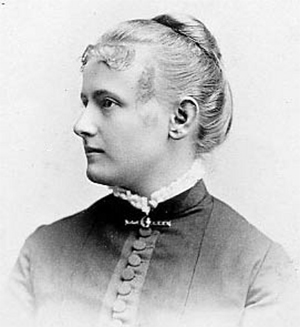
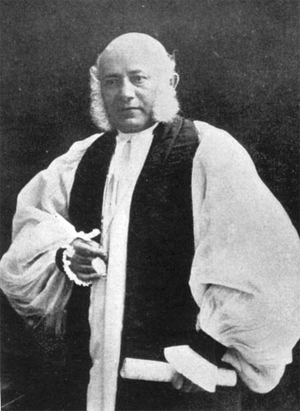
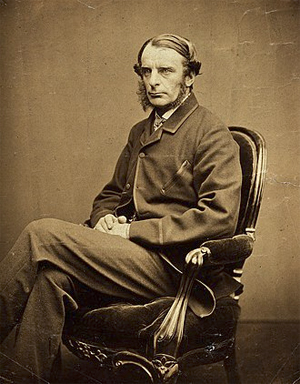
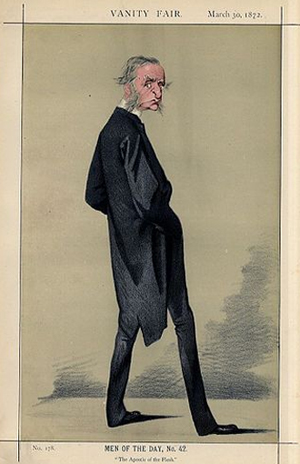
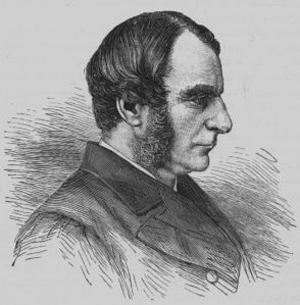
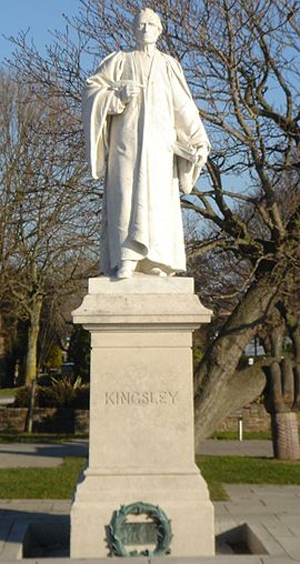
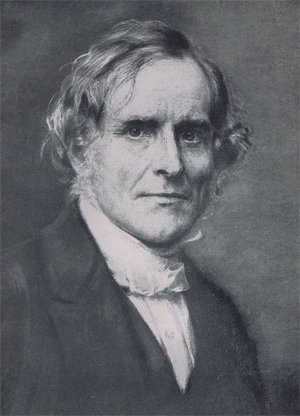
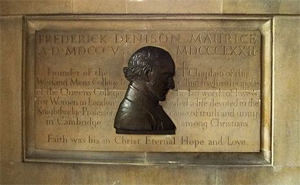
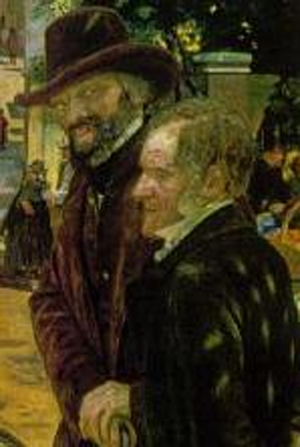
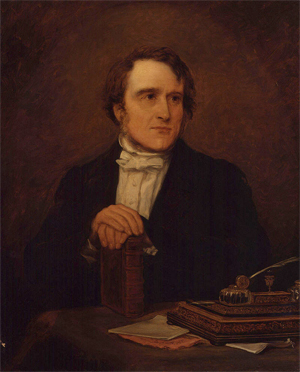
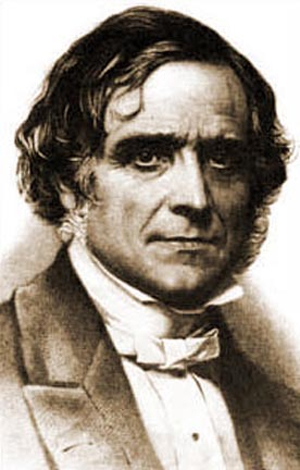
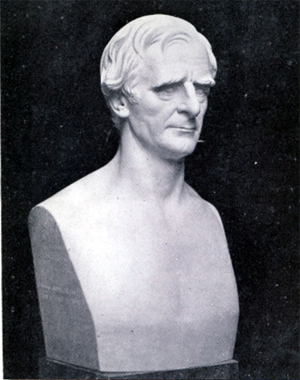
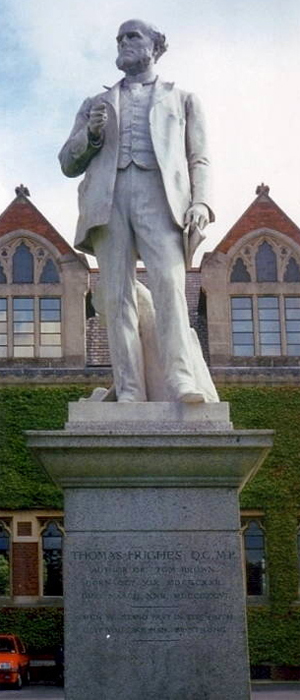
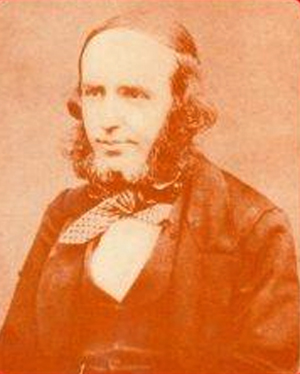
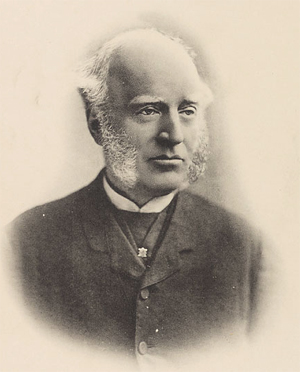
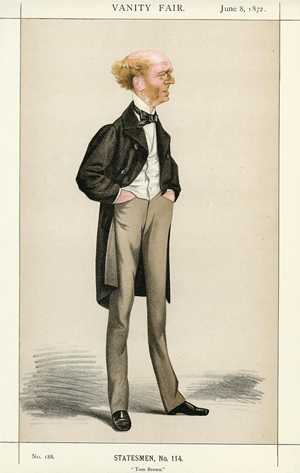
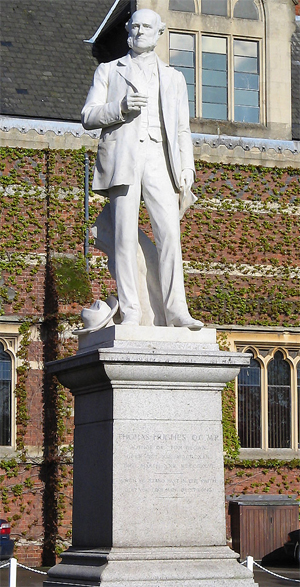
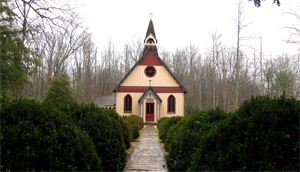
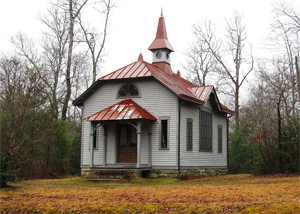
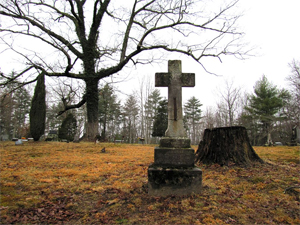
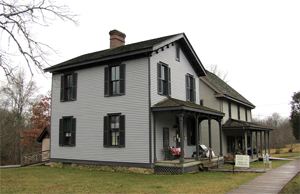
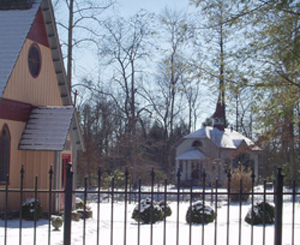
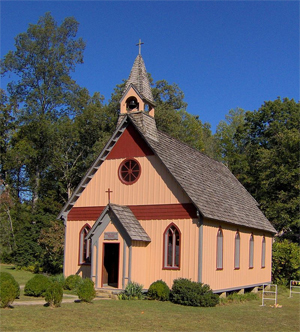 / 1887 / -- / --
/ 1887 / -- / --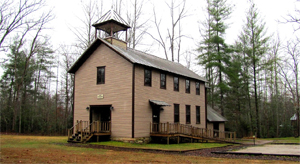 / 1880/1907 / -- / --
/ 1880/1907 / -- / --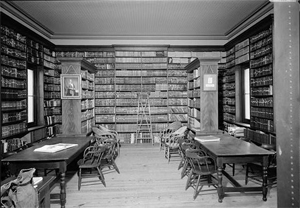 / 1882 / -- / Author Thomas Hughes (1822–1896)
/ 1882 / -- / Author Thomas Hughes (1822–1896)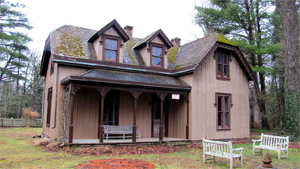 / 1884 / Thomas Hughes / Community in Hughes's native Berkshire, England
/ 1884 / Thomas Hughes / Community in Hughes's native Berkshire, England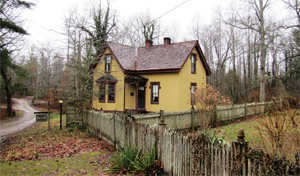 / 1884/1970s / Sir Henry Kimber (1834–1923) / Kimber's son
/ 1884/1970s / Sir Henry Kimber (1834–1923) / Kimber's son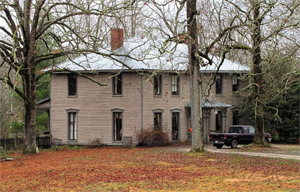 / 1886 / Montgomery Boyle / Roslyn Castle in Scotland
/ 1886 / Montgomery Boyle / Roslyn Castle in Scotland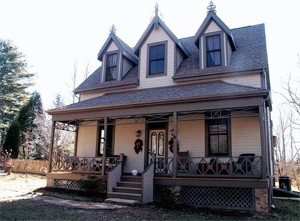 / 1881/2007 / Robert Walton /
/ 1881/2007 / Robert Walton / 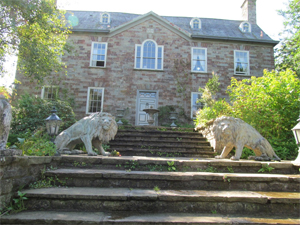
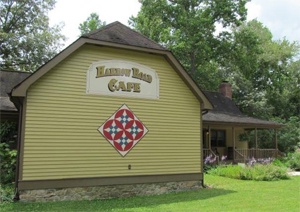 / 1880s/1985 / -- / Harrow Road in London
/ 1880s/1985 / -- / Harrow Road in London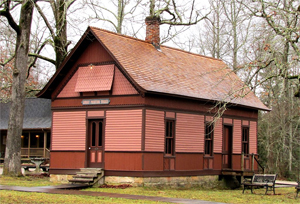 / 1880s / Abner Ross / Originally located at Deer Lodge, a nearby resort founded by Ross in the 1880s
/ 1880s / Abner Ross / Originally located at Deer Lodge, a nearby resort founded by Ross in the 1880s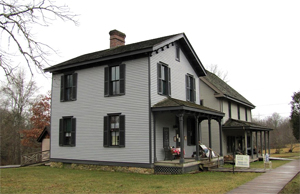 / 1880/1970s / -- / --
/ 1880/1970s / -- / --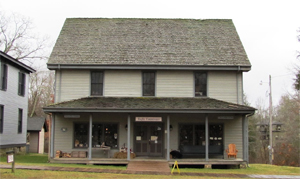 / 1880/1970s / Publicly owned / --
/ 1880/1970s / Publicly owned / --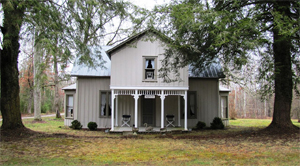 / 1884 / Russell Sturgis / --
/ 1884 / Russell Sturgis / --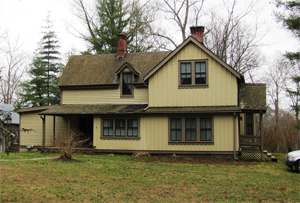 / 1881 / Frederick Wellman / Adena Mansion in Ohio, built for Wellman's grandfather-in-law
/ 1881 / Frederick Wellman / Adena Mansion in Ohio, built for Wellman's grandfather-in-law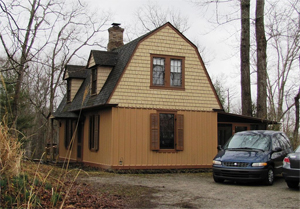 / 1887 / Frederick Wellman / --
/ 1887 / Frederick Wellman / --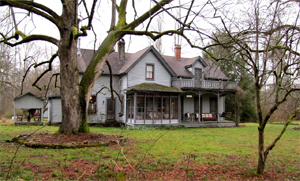 / 1880 / Nathan Tucker / Linden trees planted around the house
/ 1880 / Nathan Tucker / Linden trees planted around the house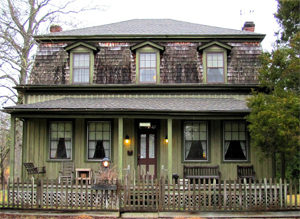 / 1880 / Ross Brown / --
/ 1880 / Ross Brown / --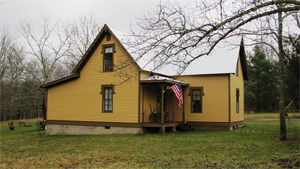 / 1880s/2007 / -- / Rugby architect/builder Cornelius Onderdonk
/ 1880s/2007 / -- / Rugby architect/builder Cornelius Onderdonk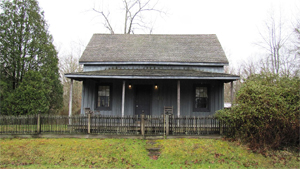 / 1880 / -- / --
/ 1880 / -- / --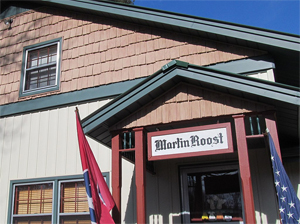 / 1880s/1960s / -- / --
/ 1880s/1960s / -- / --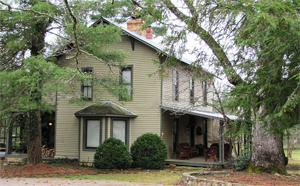 / 1881 / T. Lyon White / --
/ 1881 / T. Lyon White / --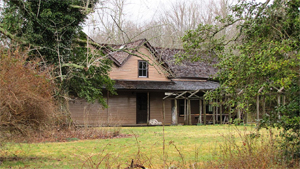 / 1881 / Margaret Hughes / Uffington, England
/ 1881 / Margaret Hughes / Uffington, England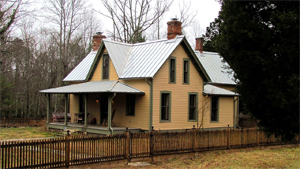 / 1884 / Daniel Ellerby / --
/ 1884 / Daniel Ellerby / --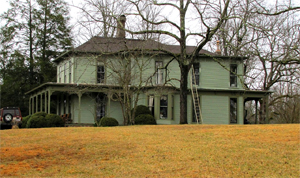 / 1884 / Beriah Riddell / --
/ 1884 / Beriah Riddell / --